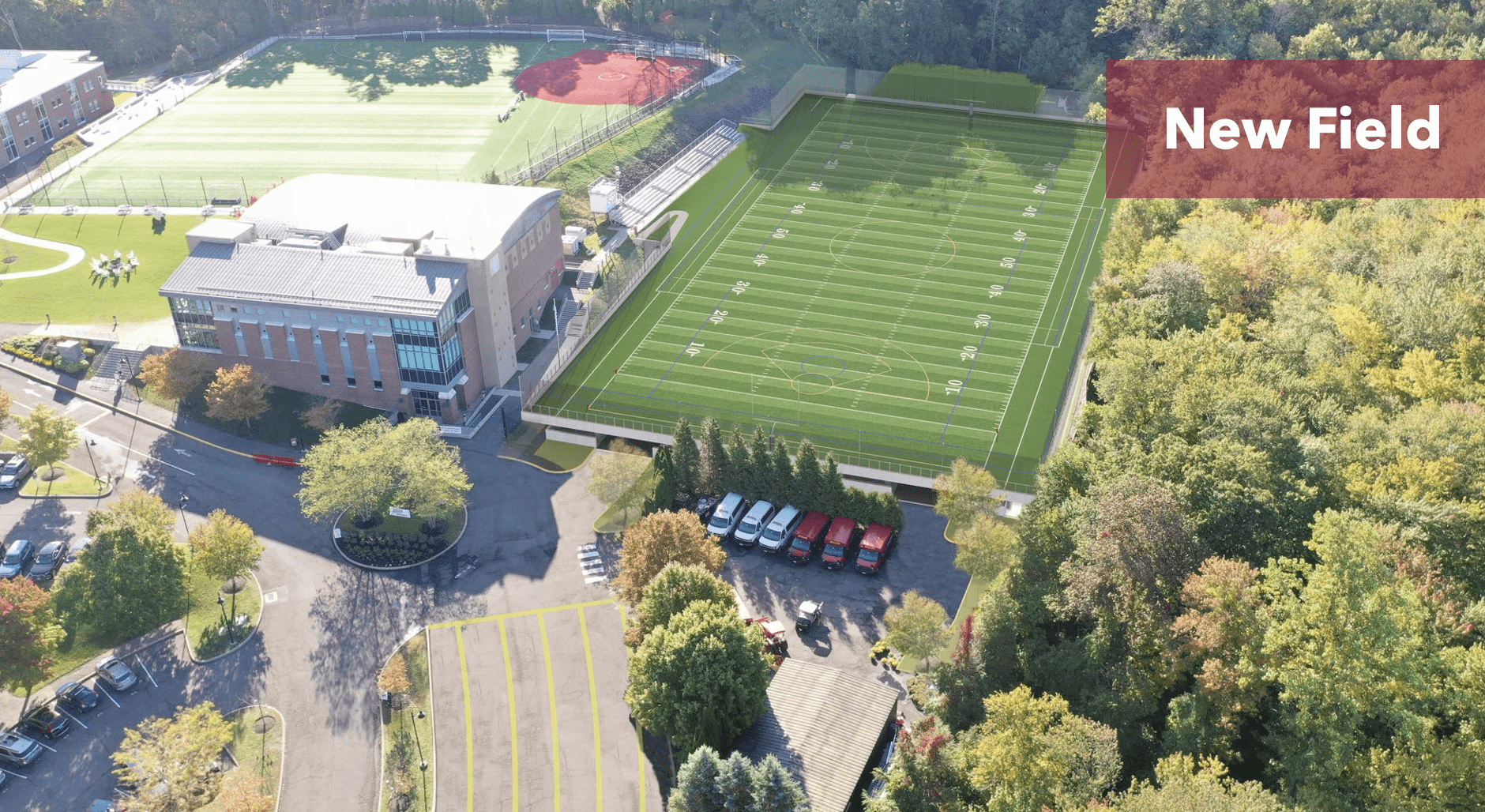By Anne White
St. Luke’s School in New Canaan has become a focal point for local controversy due to its proposal to construct a 200-car parking garage. This development, unprecedented in nature and scale for a residential zone, has sparked widespread debate and concern among residents and stakeholders of the town.
At the core of the issue is the school’s innovative but contentious plan to build the parking structure beneath the aging Watson Turf Field where an updated artificial turf football field will be installed. The proposal seeks to address multiple issues, such as traffic congestion, parking limitations, and the renovation of the aging Watson Turf Field. The concept, though potentially transformative for the school, is not without its detractors.
One of the primary concerns raised by residents relates to the impact of such a development on the residential nature of the area. Critics argue that the construction of a high-capacity parking garage in a residential zone is a significant deviation from existing zoning regulations and could set a, potentially, concerning precedent. New Canaan’s zoning laws currently prohibit parking structures in residential zones, permitting them only in business or retail areas. The proposed structure, therefore, requires a substantial amendment to these regulations, a move that some residents view as detrimental to the character and integrity of the neighborhood.
Opponents of the project have also expressed concerns about the potential environmental impact, particularly the risk of water pollution and the effects of increased noise and light pollution in what is currently a tranquil residential area. There is also skepticism regarding the claim that the new parking facility would alleviate traffic issues, with some arguing that it might instead increase local traffic and exacerbate safety concerns on the surrounding roads.
St. Luke’s School, for its part, has emphasized the benefits of the project, highlighting how it aligns with the community’s needs and the school’s long-term vision. They stress the collaborative nature of their planning process, incorporating input from various stakeholders, and the potential for the project to serve as a model for similar institutions facing comparable challenges.
The New Canaan Planning and Zoning Commission, tasked with evaluating the proposal, must take into account these differing viewpoints. Their decision will not only shape the future of St. Luke’s School but also potentially influence the town’s approach to development and zoning regulation in residential areas.
Some residents have raised environmental concerns, notably regarding water quality and the potential presence of harmful substances like per- and poly-fluoroalkyl substances (PFAS). There were concerns about the project’s compliance with notification requirements, highlighting the importance of transparency in community developments.
Representatives of the project underscored its alignment with environmental standards. They pointed out that a thorough review of potential environmental impacts had been conducted, ensuring adherence to regulations.
UPDATED 4/24/2024: It was also indicated that concerns regarding nearby environmental resources had been addressed by Norwalk‘s First District Water Department. In a recent email to the New Canaan Sentinel, the Norwalk First District Water Department wrote: “Because the land in question is in the watershed for Grupes Reservoir, an essential component of Norwalk‘s drinking water infrastructure, the District was given the opportunity to conduct an environmental engineering assessment of the project. This assessment found several concerns that the project planners have now addressed. The District then stated that we would not object to the plan if our concerns and conditions were met.”
Traffic experts for the project spoke about its impact on local traffic patterns. They argued that the proposed solution, despite a reduction in the initially planned number of parking spaces, would effectively manage traffic flow and reduce congestion in the affected area.
Environmental consultants for the project also addressed concerns. They discussed the environmental considerations incorporated into the project’s design, including effective stormwater management and the use of eco-friendly materials in the turf field.
Despite expert endorsements, community apprehensions persist. Concerns remain about the impact of potentially increasing enrollment at the school on local infrastructure. Questions were posed regarding the fairness of potentially exempting the garage from building coverage calculations. Additionally, there are those apprehensions about the necessity of a significant amendment to zoning regulations, which could set a precedent for the construction of similar large-scale parking structures in residential areas.
Other concerns included increased traffic from non-local visitors, potential impacts on neighboring historic homes, and the balance between the institution’s developmental goals and broader community interests like affordable housing and downtown parking. The planning process itself was critiqued for potential oversights and risks of unforeseen environmental and infrastructural consequences.
In a recent development, the local Inland Wetlands Commission voted unanimously to approve the proposal, marking a significant milestone.
As this issue continues to be debated in New Canaan, the upcoming decision by the Planning and Zoning Commission is highly anticipated.





